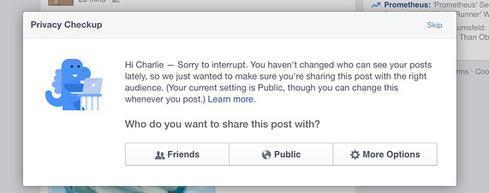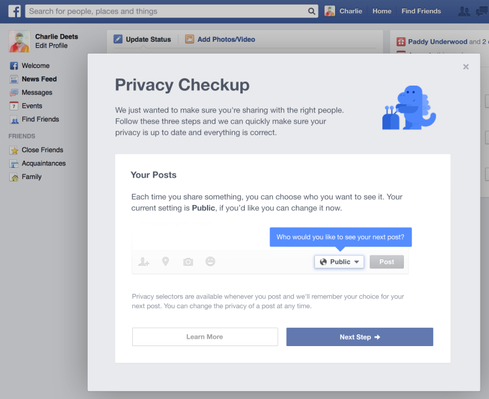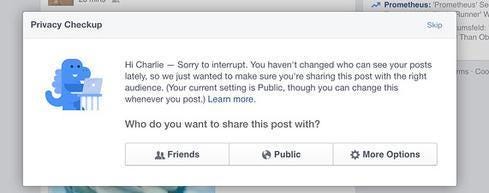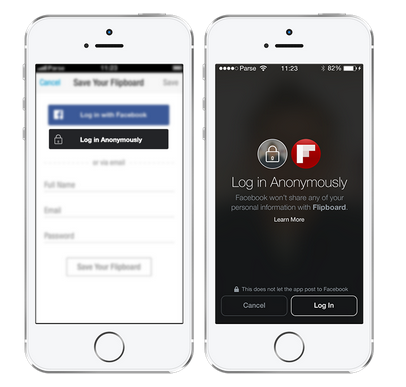Facebook's privacy makeover continues with changes designed to make your account easier to manage. And have you met the privacy dinosaur?

Facebook users have complained for years that the social network's privacy settings are too confusing. For the most part, the company has done little to make them easier to understand -- until recently. Amid increased government regulation and a desire to keep Facebook's user base strong, it appears Mark Zuckerberg and company have had a change of heart.
This week, the social network announced another handful of privacy updates and changes to help you more easily manage your account.
"While some people want to post to everyone, others have told us that they are more comfortable sharing with a smaller group, like just their friends," Facebook wrote in a blog post. "We recognize that it is much worse for someone to accidentally share with everyone when they actually meant to share just with friends, compared with the reverse."
[Get a grip on your account. Read 10 Most Misunderstood Facebook Privacy Facts.]
In the past month, Facebook has tested and launched a number of new privacy features -- from additional photo settings to new pop-up alerts if you're about to post publicly. Here's a rundown of Facebook's six most recent privacy changes and what they mean for your account.
1. Additional photo settings
Your current profile photo and cover photos have traditionally been public by default. Soon, Facebook will let you change the privacy setting of your old cover photos -- a capability it is gradually rolling out to all users. (Facebook already lets you change the privacy settings of your former profile photos.)
Figure 1: 
When you receive the update, navigate to your photo albums homepage and open the one titled Cover Photos. To change the audience of a photo, click it, and then hover over the icon next to the date. Choose your new privacy setting for the photo from the dropdown menu.
2. More visible mobile sharing settings
When posting to Facebook via a mobile device, Facebook's audience selector has been hidden behind an icon that corresponds with your privacy setting -- a globe if you post publicly, a two-person silhouette to share with friends, and a lock symbol if the post is private, for example.
Figure 2: 
Facebook will move the audience selector to the top of the update status box in a new "To:" field similar to what you see when you compose an email. This change makes it easier to see who you're about to share something with, which can help prevent unintended sharing.
3. Default settings for new users
In the past, when new users joined Facebook, the social network usually set the audience of their posts automatically to public. This left it up to them to change it if they wanted more control. Moving forward, Facebook will
change this default setting from Public to Friends, instead.
Facebook will also alert new users to choose an audience for their first post. If they don't make a choice, Facebook will set it to Friends. Anyone can change their audience at any time and can alter the privacy of their past posts as well, the social network said.
4. Privacy checkup tool
In early April, some Facebook users reported spotting the elusive Facebook "privacy dinosaur," which led them through a privacy checkup. Facebook confirmed this week that it will roll out this tool to make users more aware of their settings.
Figure 3: 
"We want to do all we can to put power and control in people's hands," Facebook said. "This new tool is designed to help everyone make sure they are sharing with just the audience they want."
The privacy checkup tool will cover a number of settings, including who they're posting to, which apps they use, and the privacy of their profile information.
5. Public posting reminder
Facebook's privacy dinosaur will also remind you when you're about to post publicly to prevent you from sharing an update with more people than you intended.
Figure 5: 
The pop-up reads, "Sorry to interrupt. You haven't changed who can see your posts lately, so we just want to make sure you're sharing this post with the right audience. (Your current setting is Public, though you can change this whenever you post.)"
6. Anonymous login
At Facebook's F8 developer conference earlier this month, CEO Mark Zuckerberg announced that Facebook Login, the button that allows third-party apps and websites to use Facebook login credentials, will support anonymous login.
Figure 4: 
Anonymous login lets you log into apps so you don't have to remember usernames and passwords, but it doesn't share personal information from Facebook. Traditionally, people using Facebook Login would need to allow the website or app to access certain information in their profiles.
What do Uber, Bank of America, and Walgreens have to do with your mobile app strategy? Find out in the new Maximizing Mobility issue of InformationWeek Tech Digest.
About the Author(s)
You May Also Like







